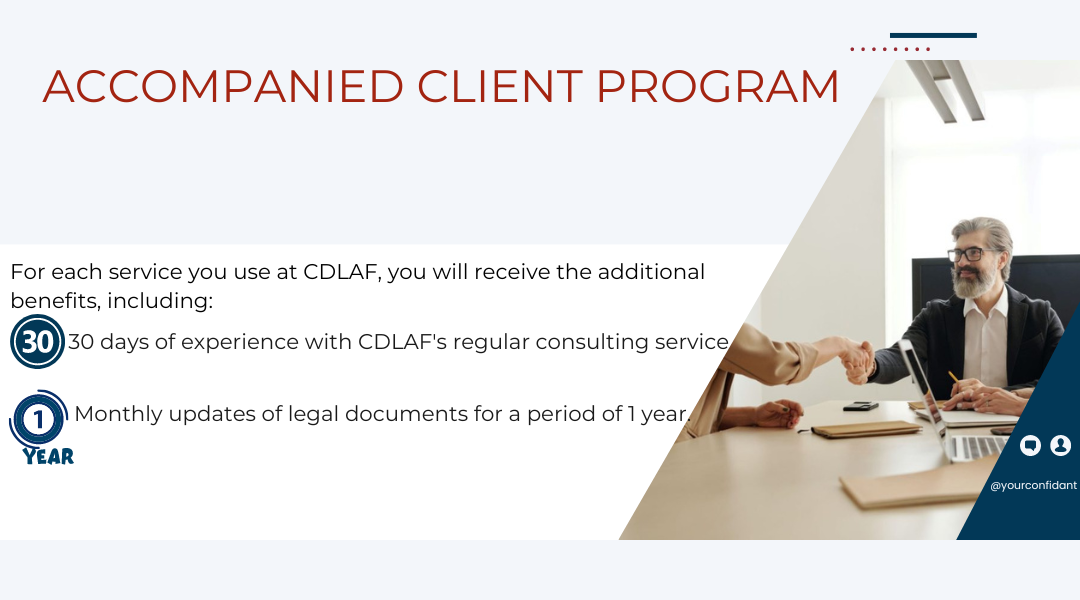In today’s competitive business environment, effective control and debt management are important factors to ensure the existence and sustainable development of an enterprise. Unmanaged debt can have a negative impact on capital circulation, financial capability, and the reputation of the enterprise. This raises the question: How can enterprises effectively control debt and manage it?
In this article, we aim to share some legal points on control and debt management, with the desire to ensure the interests of enterprises in debt recovery.

1. Debt tracking
To control debts and choose appropriate handling methods, enterprises first need to ensure the “Tracking of debt”. However, debt tracking here is not simply tracking on accounting books, but here monitoring is considered in terms of:
- Whether the debt still within the statute of limitations (time limit) for the enterprise to take actions to request the procedural authorities to settle;
- Whether partners, customers are making any actions on dissolution, bankruptcy declaration, capital transfer, etc.;
- Whether the enterprise keeps documents to record debt such as emails, Contracts, Reconciliation minutes, acceptance minutes, and which documents have confirmation of the customer’s debt;
- The reason the customer does not pay the debt is due to the customer’s subjectivity or for any reason related to the quality of products and services that the company has provided to the customer. The enterprise also needs to determine which party is at fault, and whether that fault factor is an acceptable condition for customers to not pay debt.
In addition to the above issues, it is also important for enterprise to evaluate the customer’s payment capability for debt, so that enterprise can choose methods to request customers to pay debts effectively in a timely manner. In fact, some businesses choose to set off debt with products, services or through a third party instead of waiting for customers to pay debt, because of the low ability to recover debt.
Therefore, debt monitoring is not only monitoring the cash flow in and out for that debt, but the enterprise shall have a process to monitor and evaluate the recoverability for each debt to find out obtain an appropriate and quick method of debt recovery as well as avoid losing the right to initiate a lawsuit at Court or Arbitration when the statute of limitations has passed.
2. Choosing the Arbitration or Court Method for Debt Resolution
In order to choose the appropriate method, the enterprise first needs to review the agreement of the parties in relevant documents such as Contract, Appendix, Principle Contract,… This is done to determine whether the dispute resolution clause is recorded by the parties at the time of contract signing. In case the clause recognizes the Arbitrator as the dispute resolution agency and this clause comes into effect, the enterprise’s debt recovery request will be resolved by the Arbitrator.
In case the dispute resolution clause is not established between the parties or the parties agree to choose the court as the resolving entity, then the debt recovery request of the business will be resolved by the court.
In some cases, the choice between arbitration or court to resolve disputes will have a significant impact on the ability to recover debts. Therefore, right from the contract negotiation stage, businesses need to consider various factors such as enforceability, language, venue of resolution, transaction confidentiality, speed in the dispute resolution process, whether the customer is domestic or foreign, etc. Based on these factors, businesses can choose between arbitration or court.
3. When is the Court or Arbitrator typically chosen?
Currently, in domestic transactions, the Court is the chosen dispute resolution authority by the parties involved. This stems from the fact that the court fees are lower than the costs associated with resolving disputes through arbitration. The judicial process consists of two levels: first instance and appellate, wherein a party has the right to appeal the judgment of the first instance court if they identify violations in terms of content or procedure. This is one of the reasons why parties opt for the Court. However, except for certain special cases as determined by the Court, all other cases are publicly heard. The resolution time at the Court is quite long due to the substantial caseload handled by the Court. These factors are also taken into consideration by some parties when choosing arbitration as the dispute resolution mechanism.
In addition to the option of debt recovery through the Court or Arbitration, many businesses also choose to engage a third party to take legal actions for debt collection from their customers. This is considered as one of the preliminary steps to assess the customer’s ability and willingness to repay the debt, as the process of debt recovery through mechanisms like Arbitration or the Court can be time-consuming.
Establishing a clear and strategic debt management process, coupled with flexible payment policies, helps businesses understand their financial situation and maintain their rights and interests. Additionally, collecting and analyzing customer information assists businesses in gaining a better understanding of their customers’ payment capabilities and helps mitigate risks during transactions. However, debt control and handling are not solely rigid procedures but require flexibility and creativity to adapt to specific situations and changes in the business environment. It is crucial for businesses to grasp the fundamental principles and apply them appropriately to their specific circumstances.
Time of writing: 30/05/2023
The article contains general information which is of reference value, in case you want to receive legal opinions on issues you need clarification on, please get in touch with our Lawyer at info@cdlaf.vn

Why choose CDLAF’s service?
- We provide effective and comprehensive legal solutions that help you save money and maintain compliance in your business;
- We continue to monitor your legal matters even after the service is completed and update you when there are any changes in the Vietnamese legal system;
- Our system of forms and processes related to labor and personnel is continuously built and updated and will be provided as soon as the customer requests it;
- As a Vietnamese law firm, we have a thorough understanding of Vietnam’s legal regulations, and grasp the psychology of employees, employers, and working methods at competent authorities;
- CDLAF’s team of lawyers has many years of experience in the field of labor and enterprises, as well as human resources and financial advisory.
- Strict information security procedures throughout the service performance and even after the service is completed.
You can refer for more information:
- Establishment of Enterprise in Vietnam, What Foreign Investors Need to Consider (Part 1)
- Establishment of Enterprise in Vietnam, What Foreign Investors Need to Consider (Part 2)
- Procedure for Foreign Investor to contribute capital, purchase shares in the enterprise in Vietnam.
- The enterprise with opening and using direct investment capital account
- Avoiding the risks when leasing the office in Vietnam – some recommendations
- Foreign Investors provide Employment Services in Vietnam
- Franchise in Vietnam (Part 1)
- Franchise in Vietnam (Part 2)
- Foreign investor doing hotel business in Vietnam
- Regulations on capital contribution for Shareholder and Member
- Business conditions for foreign investor in the education service in Vietnam (Part 1)
- Business conditions for foreign investor in the education service in Vietnam (Part 2)
- Business Conditions for advertising services for foreign investor in Vietnam







